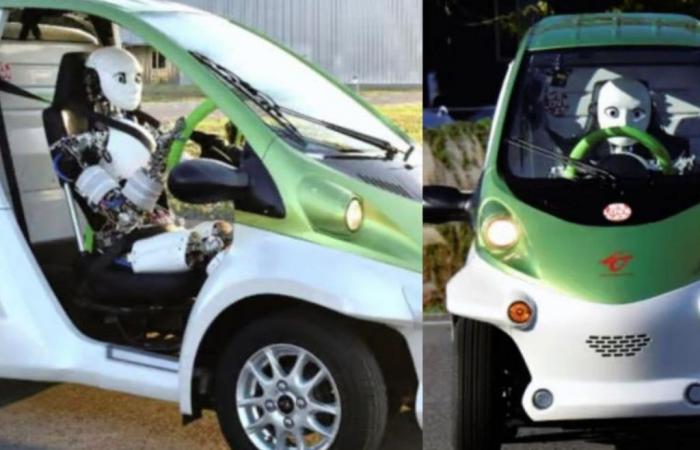
Tokyo’s latest technological marvel: Musashi, the robot that drives!
Forget everything you know about self-driving technology: Tokyo’s latest innovation, Musashi, a robot designed to operate vehicles, is blazing a new trail in automotive progress.
Read also:
The rise of robot pilots?
In a laboratory at the University of Tokyo, a new technological feat is emerging, combining robotics and vehicle operation. Musashi, a humanoid robot with advanced capabilities, is at the forefront of this innovation. Developed for driving, Musashi’s unique design allows him to control a vehicle like a human would.
Will China be the first nation in the world to master nuclear fusion with this major breakthrough?
A humanoid approach
Musashi is not a “traditional” robot. Designed to mimic human anatomy, it features a sophisticated musculoskeletal structure with 74 artificial muscles and 39 joints, excluding the hands. This design serves a purpose and allows Musashi to easily perform complex movements like turning the steering wheel and operating the pedals. The robot’s body includes durable materials and a system of pneumatic actuators that simulate human-like flexibility and muscle tension.
Sensory and control systems
To navigate the roads safely, Musashi is equipped with high-resolution vision cameras integrated into its eyes. These cameras can pan and tilt, providing a wide range of views, from simple road scanning to quick checks in the side mirrors. Additionally, Musashi’s hands and feet are equipped with sensors that assess strength and flexibility, essential for adjusting controls such as the handbrake, ignition and pedals.
Musashi driving skills test
Musashi’s road tests showed promise. During a test in a Toyota COMS electric car, Musashi successfully managed an intersection by responding to traffic lights without human intervention. However, challenges remain, such as maintaining a consistent speed over varied terrain and recognizing dynamic obstacles like pedestrians.
Other possible applications?
Although driving is the Musashi’s primary function, its human-like design also makes it an ideal candidate for other roles, such as that of a crash test dummy in safety simulations. This versatility opens new possibilities for robotic applications in areas requiring detailed human interaction without putting human lives at risk.
The future humanoid robots
The University of Tokyo research team is optimistic about the future applications of humanoid robots like Musashi. The knowledge gained from Musashi’s development and testing paves the way for further advancements in robotic technology and autonomous driving.
This French champion of chemistry invests 250 million euros in the United States and establishes itself as an essential player in the key semiconductor sector
This article explores the innovative steps taken by researchers at the University of Tokyo with Musashi, a humanoid robot designed to drive cars. With its advanced design and sensory systems, Musashi represents a significant step forward in integrating robotic technology into everyday human activities.
Source: University of Tokyo





